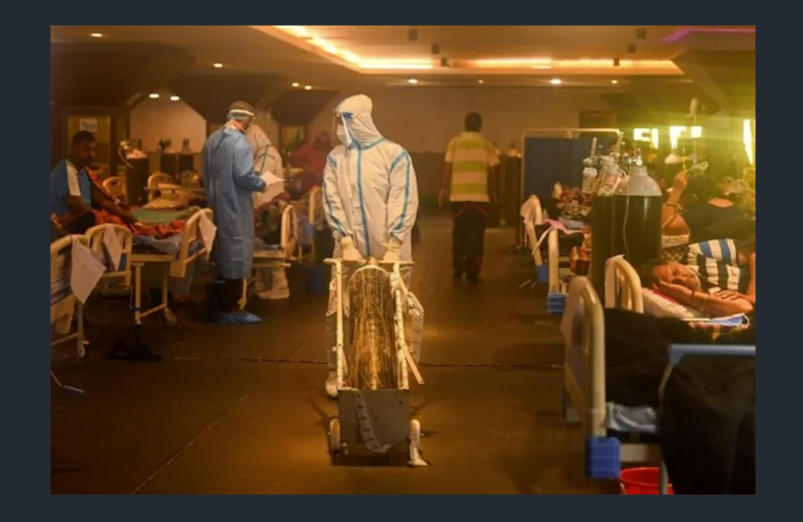India’s coronavirus disaster deepened on Thursday with its daily death toll climbing above 3,600, as more international aid was flown in with the United States sending nearly one million test kits.
The United States and several European nations have started to ease restrictions this week following successful vaccination campaigns, but the pandemic continues to worsen in many parts of the world.
Among the most devastating of those waves is in India, where the death and infection rates have been rising exponentially throughout April.
The pandemic has claimed at least 3.1 million lives around the world, with India accounting for more than 200,000 fatalities.
In many Indian cities, hospitals are running out of beds as relatives of the sick crowd outside pharmacies and suppliers for medicines and oxygen cylinders.
“We rushed to multiple hospitals, but were denied admission everywhere,” said the son of an 84-year-old woman who died at home this week after a desperate search for a hospital bed and oxygen in Kolkata, capital of West Bengal state.
The spiking body count has also overwhelmed crematoriums and graveyards, and caused a shortage of wood for funeral pyres.
The Indian government will open vaccinations to all adults from Saturday. It had previously limited shots to the over-45s and certain other groups.
Several states have warned, however, that they do not have sufficient vaccine stocks and the expanded rollout is threatened by administrative bickering, confusion over prices and technical glitches on the government’s digital vaccine platform.
Many nations have rushed to help India, including the United States which on Wednesday announced it was sending more than $100 million in supplies.
A first US military flight, carrying 960,000 rapid tests and 100,000 face masks for frontline health workers, was due to arrive on Thursday.
The World Health Organization has said the virus variant feared to be contributing to the catastrophe in India has now been found in more than a dozen countries.
But the body stopped short of saying it is more transmissible, more deadly or able to dodge vaccines.
Ugur Sahin, the co-founder of vaccine developer and Pfizer partner BioNTech, said he was confident his company’s shot works against that variant.
– ‘Ready for takeoff’ –
In the United States, President Joe Biden on Wednesday hailed his nation’s inoculation programme as one of “the greatest logistical achievements” in American history.
More than 234 million doses had been administered by Wednesday in the United States, according to the Centers for Disease Control. The rollout has boosted hopes that the world’s biggest economy is primed for recovery.
Countries are looking to do the same in Europe, where more than 50 million known infections have been logged since the start of the pandemic, according to an AFP tally of official data Wednesday.
The Netherlands on Wednesday ended a curfew and eased restrictions on outdoor bars and terraces.
It followed similar moves in Italy, Portugal and Switzerland. France is hoping to join the trend and ease more restrictions this month.
– ‘Never imagined it would come to this’ –
Outside of the wealthier parts of the world, however, governments are scrambling to find any available vaccine stocks so they can accelerate their rollouts.
In addition to the shots developed in the West, Chinese and Russian candidates have also been exported and helped many nations launch their vaccination programmes.
But there was a setback for Russia’s Sputnik V jab this week, when Brazil’s drug regulator denied permission to import it to the hard-hit South American nation on the basis that the batches they tested carried a live version of a common cold-causing virus.
Some scientists have backed that decision, saying it could be a safety issue for people with weak immune systems.
The Gamaleya Institute, which developed the vaccine, has denied the reports.
A deal has been signed to produce Sputnik V in Brazil’s neighbour Argentina, where the pandemic restrictions and the resulting economic collapse continue to punish the poorest.
Before the crisis, Daisy Garcia used to serve meals to around 80 people at a soup kitchen on the outskirts of the capital Buenos Aires.
She now distributes meals for almost 1,000.
“We never, never imagined it would come to this,” said the 26-year-old.



Comments are closed.